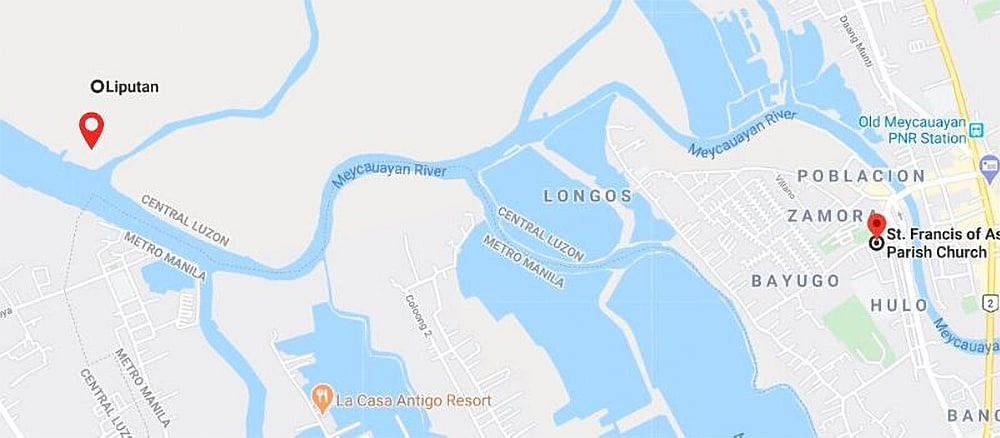Last Updated on November 4, 2020 by OJ Maño
Marilao, Bulacan Festival: Luyang Dilaw (May 2)
Luyang Dilaw or Halamang Dilaw Festival celebrates the town’s prosperity by paying tribute to nature’s wonder root crop called “luyang dilaw” (turmeric ginger). The said Bulacan festival is not complete without funfairs, exhibits, contests, concerts, street dancing, and many more.

Legend has it that turmeric ginger was a superabundant crop in this part of Bulacan in the old days. The old folks then referred to this place as “Luyang Dilaw” (Yellow ginger), “Halamang Dilaw” (Yellow plant), or “Madilaw” (Something yellowish in color). The name eventually evolved to become Marilao.
Whether the legend is true or not, this festival is worth experiencing.
Meycauayan, Bulacan Festival: Liputan Fluvial Parade (1st or 2nd Sunday of May)
According to the locals, the barrio fiesta of Liputan is the most popular among the other fiestas in the city. This Bulacan festival is known for the fluvial parade celebrating the “Kapistahan ng Mahal na Señor” (the feast of the Mahal na Señor). This is usually held every 1st or 2nd Sunday of May depending on the tide.
It starts early in the morning where the image of the Mahal na Señor is placed on a big makeshift boat called a “Pagoda”. It is accompanied by parishioners on “bangka” or smaller boats, and sails across the Meycauayan River. It ends with the Mahal na Señor and the parishioners going to the Holy Mass held at the Saint Francis of Assisi Parish Church in downtown Meycauayan, more commonly known as the Meycauayan Church.

After the mass, the townfolks bring the image of the Mahal na Señor back to the Liputan church through the river again. You can see parades and dancers on the streets adjacent to the river accompanying the Pagoda back to the barrio.
Pulilan, Bulacan Festival: Kneeling Carabao (May 14-15)
Every 14th and 15th of May, the town of Pulilan celebrates the feast of San Isidro Labrador (Saint Isidore the Farm Laborer). He is the patron saint of farmers and agriculture in general. This Bulacan festival is renowned for the tradition of kneeling carabaos together in a grandiose street parade.
Hundreds of people go out on the streets to watch the beautiful floats decorated with all sorts of fruits, farm crops, produce, and multi-colored kiping. Kiping is a traditional Filipino leaf-shaped wafer made from glutinous rice. It originates from the city of Lucban, Quezon. There are marching bands and graceful street dances leading the festive atmosphere.
There are also farm animals decorated in fancy garlands joining the parade. The highlight of the event is carabaos kneeling in front of the church which symbolizes thanksgiving for a year-long bountiful harvest.
Obando, Bulacan Festival: Kasilonawan (May 17-19)
From May 17 to 19, the town of Obando celebrates Kasilonawan Festival. This Bulacan Festival is a 3-day celebration in honor of 3 patrons: Nuestra Senora de la Inmaculada Concepcion de Salambao, San Pascual Baylon, and Santa Clara (St. Clare of Assisi). On this occasion, childless couples dance on the streets during the parade to honor and beseech the patrons for their intercession.
Everyone is invited. Single ladies and men dance for life partners. On the other hand, farmers join the procession to offer thanksgiving for a bountiful harvest. Locals and pilgrims sway to the fandango dance while singing the hymn, “Santa Clara Pinung-Pino” (Saint Clare, Most Refined).
According to historians, the origin of Kasilonawan, an ancient fertility dance, dates long before the Spaniards came. When they came and introduced Roman Catholicism to the natives, the tradition remained but integrated into the Catholic faith.
Baliuag, Bulacan Festival: Buntal Hat (May 26)
The town of Baliuag celebrates the Buntal Hat Festival. The festival activities usually span a week (or up to 3 weeks) and culminate on May 26. May 26 is the town’s founding anniversary.
The buntal hat is a traditional straw hat from the Philippines woven from fibers extracted from the Buri palm leaves. The town is famous for the beautiful Buntal Hats which are sold in different parts of the country and the world.
To help preserve the tradition and the local industry of buntal hat making, the local government of Baliuag created this festival. The said festival is not complete without funfairs, exhibits, a beauty contest called “Lakan and Lakambini ng Baliwag,” concerts, street dancing, and many more.
Read: Flores de Mayo: A Loving Tribute to the Blessed Virgin Mary







